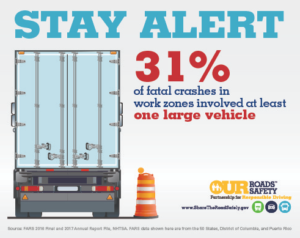“The best offense is a good defense” is an adage that is often applied to football and basketball. The expression is used to note that success can hinge on an effective defense that keeps the ball on the other team’s side of the field, thus not only creating scoring opportunities but preventing the opposing team from scoring.
Likewise, for commercial truckers, focusing on defensive driving will help that person succeed in avoiding accidents on the road.
It’s all about Defense – Defense – Defense!
Defensive driving is at the very heart of safety where truck driving is concerned. Truck drivers have to be constantly vigilant (on the defensive) to detect unexpected road conditions, distracted drivers, and motorists who don’t understand how commercial vehicles operate.
Constantly practicing defensive driving will keep even the most well-trained and experienced CDL driver safe. It will minimize risky behavior that could lead to a crash on a crowded highway.
At DriverSource, promoting safe driving at all times is our top priority. When driving, we agree that the best offense is a great defense.
Here are some a few simple, but important, safety tips truck drivers should follow while behind to wheel:
- Buckle up!
First, and foremost, minimize risk to yourself by always wearing your safety belt. Without question, a safety belt is the most important in-cab safety device that will protect an occupant in the event of a sudden stop or crash. The National Highway Traffic Safety Administration (NHTSA) notes that, in 2016, safety belts saved over 15,000 American lives.
- Reduce driving speed in adverse road and/or weather conditions.
Adjust your speed to safely match weather conditions, road conditions, visibility, and traffic. Excessive driving speed is a major cause of fatal crashes, and higher speeds may cause more severe crashes. The Fatality Analysis Reporting System (FARS) recently reported that 25 percent of speeding-related large-truck fatalities occurred during adverse weather conditions.
- Avoid driver fatigue by getting enough sleep
An adequate amount of sleep each night prevents the drowsiness that impairs a driver’s response time to potential hazards, increasing the chance of being in a crash. Always pull over and rest if you become drowsy while driving.
- Maintain a safe following distance
It is a simple law of physics that large trucks need additional space between vehicles to allow for safe braking and unexpected actions. In crashes, large trucks most often hit the vehicle in front of them.
- Don’t be distracted and take your eyes off the road ahead
Distractions such as texting or talking on a cell phone, looking at billboards, buildings, and people instead of keeping your eyes on the road can lead to disaster. While driving, give your full attention to the road ahead.
Bill D for DriverSource


